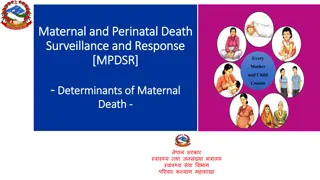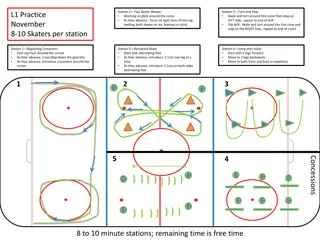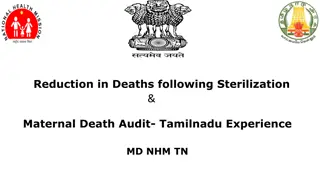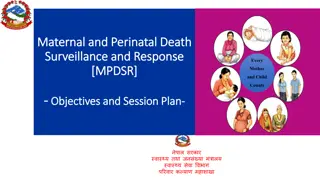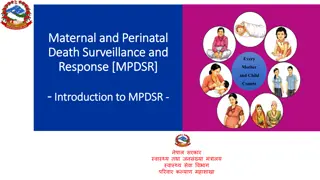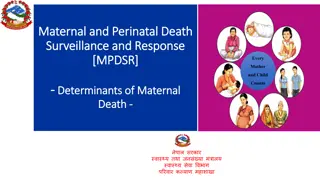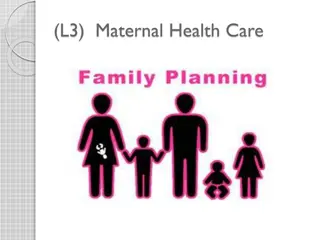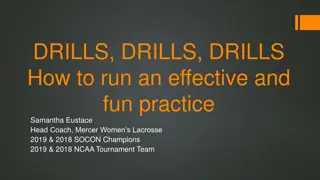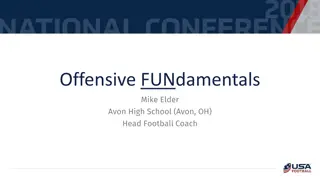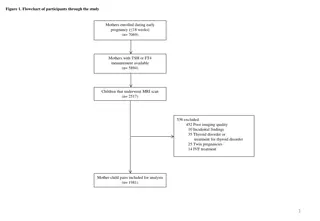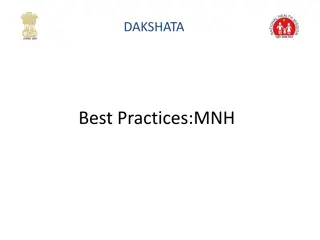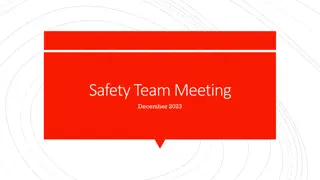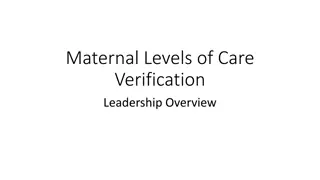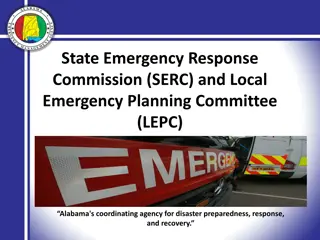Obstetric Emergency Drills: Enhancing Maternal Care Quality
Obstetric emergency drills play a crucial role in improving the quality of care for pregnant women facing life-threatening complications. By providing a method for clinicians to practice managing obstetric emergencies in a safe environment, these drills help enhance knowledge, skills, and teamwork, ultimately leading to better outcomes for mothers and their babies.
Uploaded on Oct 05, 2024 | 0 Views
Download Presentation

Please find below an Image/Link to download the presentation.
The content on the website is provided AS IS for your information and personal use only. It may not be sold, licensed, or shared on other websites without obtaining consent from the author. Download presentation by click this link. If you encounter any issues during the download, it is possible that the publisher has removed the file from their server.
E N D
Presentation Transcript
OBSTETRIC EMERGENCY DRILLS Improve the quality of care for women having obstetric emergencies
OBJECTIVES Audience Quality improvement team for an obstetrics department Purpose Teach this team to run obstetric emergency drills on their unit Help clinical staff evaluate and improve their response to obstetric emergencies
PROBLEM STATEMENT Devastating, obstetric emergencies are rare Without a way for clinicians to maintain knowledge and skills in managing obstetric emergencies, pregnant women are at risk of not receiving the care they need when they face life- threatening complications
WHAT IS AN OBSTETRIC EMERGENCY DRILL? Method for practicing the management of an obstetric emergency in facilities where emergency obstetric care is delivered Allows providers to practice their skills and knowledge to manage infrequent, but deadly, events in their own facility Includes a debriefing session for participant reflection and learning
WHY DRILLS? Obstetric emergencies are uncommon events Participants can make mistakes, reflect and learn from them, without exposing the patient to any risk
ARE DRILLS A SIMULATION? Simulation training includes the use of a device or set of devices, like a mannequin, to recreate a real clinical situation with the following goals: Provide clinical training Evaluate clinical performance Research
DIFFERENCE BETWEEN SIMULATION AND DRILLS Simulation: FICTITIOUS As realistic as possible Well-adjusted to specific skills Results: improving individual skills and teamwork Drills: REAL Take place where events actually occur Happen unannounced, in real time Results: improving individual skills and teamwork AND improving the performance of the health service as a whole
OBJECTIVES OF DRILL TRAINING Facility readiness for obstetric emergencies Improved professional practice and teamwork The identification of areas for quality improvement Improved performance of the health service as a whole
WHAT IS NEEDED? Appropriate facility environment and consent Equipment Implementation team/trainers An obstetrician A midwife A nurse Obstetric emergency drills participants Clinicians who manage obstetric emergency drills Drill script
IMPLEMENTATION TEAM/TRAINERS ROLES Actress Acts as an obstetrics client Director Leads drill scenario Observer Evaluates actions of drill participants
ACTRESS Represents the obstetrics client and knows the obstetric emergency script Must know the symptoms in detail and have a very good knowledge of the emergency or complication Dramatizes/role plays the emergency Manages the time elapsed Can modify her performance to influence the actions of the trainees
DIRECTOR Provides the team with information on the obstetrics client s status (e.g. blood pressure, cervical exams), if participants provide appropriate assessment Follows the script; interventions dependent on the actions of the drill participants Modulates tone of voice to add realism to the situation Speaks loud and clear
OBSERVER Watches the entire drill Records what happens during the drill, using a detailed checklist Uses checklist to guide the debriefing session
THE SCRIPT The actress and director must learn the script and be prepared to respond according of the actions of the health providers The Obstetric Emergency Drills Trainer s Manual includes two scripts: postpartum hemorrhage preeclampsia/eclampsia A script can be developed for any emergency scenario and should be adjusted to the local setting
DRILL STEPS 1. Create a fiction contract with participants 2. Conduct the drill 3. Facilitate debriefing session
ESTABLISH FICTION CONTRACT PART 1 A fiction contract is a joint verbal agreement between trainers and participants Trainers acknowledge drill cannot be exactly like real life but agree to make it as real as possible Drill participants agree to do their best to act as if everything were real
ESTABLISH FICTION CONTRACT PART 2 Trainers Stress the participants should not talk to the director, director only communicates obstetrics client s clinical signs and symptoms Acknowledge that it is ok if participants make mistakes, that participants are trying their best
ESTABLISH FICTION CONTRACT PART 3 Trainers Inform participants that a debriefing session will be conducted after the drill Ask permission to video record the drill for the debriefing session Delete video at the end of the debriefing session in presence of participants to ensure confidentiality
ESTABLISH FICTION CONTRACT PART 4 Trainers explain Measures to be taken with the obstetrics client should be real up to a point Invasive procedures should not be performed Roles of the actress, observer, and drill director Trainers do not tell the participants which complications the actress will mimic
FICTION CONTRACT 1. 2. 3. 4. 5. 6. Actress Observer Director Provider 1 Provider 2 Provider 3 1 2 3 6 5 4 23
CONDUCT DRILL Set up camera to record drill Director presents participants with a clinical case Actress enters room as obstetrics client Drill commences Follow drill script Drill ends Conduct debriefing session
TIPS FOR RECORDING DRILL Equipment Video recorder Person in charge of filming the drill (other than the actress, director or observer) TV or screen for playback Technical recommendations Making open shots, do not use the zoom Film the entire drill without cutting scenes Ensure microphone working well so dialogues can be heard during the debriefing
OBSERVERS CHECKLIST To be filled out during drill by observer Guide for the debriefing session Recommendations Scan all the items in the checklist Prioritize the most relevant aspects for the debriefing Analysis by topic: Communication with the patient/among the team members Organizational leadership Call for help Diagnosis and treatment Resources
DEBRIEFING SESSION Use Observer Checklist to guide debriefing session FOUR KEY ELEMENTS 1. Establish and maintain an engaging learning environment 2. Structure debriefing in an organized way 3. Provoke engaging discussion 4. Identify and explore performance gaps (difference between the desired performance and the actual performance)
DEBRIEFING SESSION TIPS Follow a method Include all participants Ask open questions and wait for answers Use positive language not criticisms to communicate proposed improvements Utilize the recorded drill session to clarify any uncertainty about what happened Empower the participants to analyze their performance Identify comparisons to real world situations






